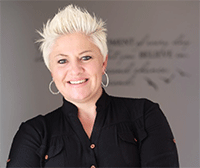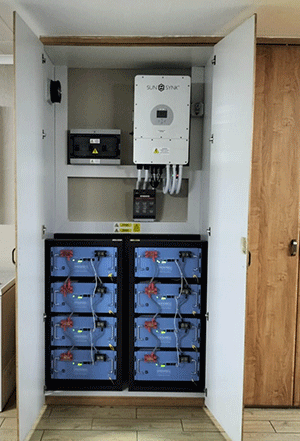
Many people are looking for back-up power solutions for their homes and businesses to see them through unpredictable and productivity-killing Eskom load shedding, and are also fed up with the rocketing costs of electricity that Eskom cannot reliably or affordably supply. The parlous state of municipalities should also be of great concern, with collapsing infrastructure, non-existent service delivery and rampant cable theft that leaves you without power for extended periods of time, compromising your productivity, safety, security, income and quality of life.
Before you rush into purchasing a back-up power solution, you need to take a considered and long-term view of how to get yourself as close to grid independence as possible. It’s crucial to consider where South Africa’s energy future is headed, and what this means for your home and business.
Any money spent on an unsuitable back-up solution today detracts from your ultimate objective of grid-independence and self-sufficiency. Don’t be lured into the many cheap ‘plug-and-play’ solutions being punted on the market by drop-and-go shippers who offer no back-up or support in this country, and even less in terms of warranties on their products.
Start with a scalable, quality solar PV hybrid solution that takes care of your immediate needs for back-up power during load shedding and power failures and allows you to scale up in future to self-generation by adding solar panels and additional batteries if needed. While you can start initially with your hybrid system configured as a back-up solution (inverter and battery only), as budget allows you will be able to expand with solar panels to generate your own power, providing back-up and saving you a fortune in electricity costs.

Not all inverters offer this scalable functionality so it’s essential to work with a renewable energy partner who is experienced in this field and understands and works with your long-term objectives. Avoid at all costs the cheap, quick fixes sold by newcomers to the industry looking to make a quick buck on SA’s energy crisis. Our energy crisis – both in term of collapsing supply and cost – does not have a quick fix, and your solution needs to be built for the long haul.
Starting your journey to grid-independence
Step 1: Convert your electric geyser to a solar geyser: An electric geyser accounts for 30-40% of your monthly electricity usage in a typical mid-income home, so this is the most crucial starting point to reducing your daily electricity load, and which means you can also buy a smaller and more affordable PV solution. A 200-litre solar geyser fully installed is around R27 000. On a R2500 electricity bill, you’ll save around R750 per month, amortising your outlay in just over three years without taking annual electricity cost increases into account.
Step 2: Start with a hybrid inverter and Li-ion battery solution that is expandable. As your budget allows, you can add solar panels and additional Li-ion batteries to provide you with a full hybrid system for self-generation, electricity savings and battery-back up.
With the advances in solar technology and pricing, you can hedge your electricity costs for the next 20-25 years and secure your supply at less than 50% of current prices that Eskom can supply it, by making savvy solar investment decisions today. Avoid the cheap, quick fixes sold by fly-by-nights who promise you the world with a R10k inverter – if it were that easy and capable of taking you off the grid, everyone would have done it long ago. There are many unqualified fly-by-nights who have popped up, with even more questionable tech offerings and sub-standard installation quality.
You’re going to be installing your solar system on your single most valuable asset and its pivotal to your quality of life, productivity and safety, so be sure to invest in the best quality systems and qualified installers with solid warranties.

Track record and technical expertise matters
Given the strategic importance of the decision you are making with regards to your electricity cost, supply and safety, as well as the quantum of your financial investment and expected ROI, work with a credible, qualified and accredited renewable energy partner that will be around for back-up, support and ongoing consultation over the lifespan of your system – that’s a good 20-25 years.
These are just some of the important considerations that One Energy suggests you look at:
•The NRS-097 regulations specify which inverters are approved to be connected to the grid. When the NRS regulations are enforced nationally (they are already in the Western Cape) – a non-approved inverter will essentially be an illegal, non-compliant connection.
•Safety and compliance are key – You’re connecting a rooftop electricity plant to your most valuable asset – your home or business – so you don’t want to get it wrong. Remember that a non-compliant system has significant implications for your insurance cover if things go wrong and you need to claim.
•Every component in your system needs to be compatible – not every inverter is compatible with every battery, not every inverter can be expanded with solar panels, and in fact even different makes of electricity meters can prove problematic. You need to deal with an expert who knows their stuff. No one becomes a specialist in six months.
•Do your homework – One Energy has been called out to assist on countless occasions where consumers have been left in the lurch by dodgy contractors who are no longer around to support their systems. In many instances we have not been able to rectify the faults or salvage any part of the installation. In some of the worst cases, people have paid big deposits to these operators, only to have them disappear with their money and find that they are not even legally registered companies.
•Membership of a professional industry body – Check whether your provider is registered and a current member of professional industry bodies such as SAPVIA. Does your provider have PV Greencard certified installers? Is there a qualified electrician to do the electrical work and provide a COC?
•Insurance – do they have the requisite business insurance such as public and contractor’s liability and goods in transit cover to insure your goods while in storage and transit to your site? If your contractor is involved in an accident or their vehicle is hijacked and your equipment is damaged or lost, are they suitably insured for the hardware which you have likely paid at least a 70% deposit for?

•Product quality and certifications – Check that solar panels are compliant with IEC standards. Is your inverter compliant with NRS-097 regulations which define which inverters are approved to be legally connected to the grid? Is your solar geyser SABS-approved? Is your installation done according to SANS-standards? Will you receive a PV Greencard with your installation?
•Quality management – considering the longevity of your investment, check whether your provider has a CRM system which records the detailed installation and service history of your system from day one, which means consistent quality control, warranty management and business continuity for you. If your original installer is no longer around, what is the succession plan to provide ongoing back-up and support on your system which has a 20+ year lifespan?
The journey to grid independence is a big and important step and you need to be sure that the steps you take today are right for your needs down the line. One Energy has an 11-year track record of over 13 000 installations and is a multi-award-winning national energy franchise group with branches across the country.

© Technews Publishing (Pty) Ltd. | All Rights Reserved.